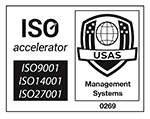Device Management
A Comprehensive Solution for Secure Endpoint Management
In this fast-paced, ever-evolving, digital world organisations rely on technology to operate efficiently.
However, the increased use of multiple devices per user has made IT security concerns more pronounced. Endpoint security management has become a critical concern for businesses to ensure their devices are secure from threats, data breaches, and cyber-attacks.
Device management allows organisations to update, monitor, control, and enforce compliance, access, and data protection policies on employee devices from an integrated cloud-based platform. Unlike traditional in-person checks, device management provides a modern, adaptable solution that ensures users connected to your IT network are secure and proactively managed, reducing the risk of security incidents that can occur with unprotected devices.
What is Device Management?
Device management is a centralized approach to managing and securing multiple devices, such as laptops, smartphones, and tablets, that are used by employees in an organization. It enables IT administrators to monitor and control the entire lifecycle of devices, from deployment to maintenance and support. A device management solution can verify OS versions, and apps, and validate access to organizational resources, servers, and files. It can also unlock, decrypt and remotely wipe devices, ensuring all devices connected to your IT network are secure and proactively managed.
Why is Device Management Important?
Device management is important because it helps organisations maintain compliance and security standards while ensuring business continuity. With the rise of remote work, the number of endpoints has increased dramatically, making it challenging for organisations to ensure endpoint security. Device management helps organisations maintain control over their devices, reducing the risk of data breaches and cyber-attacks.

Benefits of Device Management
Increased Security
Device management provides a centralized approach to managing and securing multiple devices, reducing the risk of data breaches and cyber-attacks.
Simplified Device Management
With device management, IT administrators can remotely deploy and manage software, applications, and settings on multiple devices from a single, unified platform. This simplifies device management and reduces the workload for IT teams.
Improved Productivity
Device management ensures that employees have access to the latest software and tools, which can improve their productivity and efficiency. It also allows for remote access and collaboration, enabling employees to work from anywhere at any time.
Cost Savings
By centralising device management, businesses can reduce the costs associated with managing multiple devices, such as maintenance and repair costs. Additionally, device management can help prevent data breaches and cyber-attacks, which can result in significant financial losses for businesses.
Enhanced Compliance
Device management allows businesses to enforce compliance and security policies on all devices, ensuring that they adhere to industry regulations and standards. This helps businesses avoid costly fines and penalties for non-compliance.
Device management is a comprehensive solution for secure endpoint management that enables organisations to maintain control over their devices, reduce the risk of data breaches and cyber-attacks, and ensure business continuity.
With the increasing number of endpoints and the rise of remote work, device management has become an essential tool for businesses of all sizes. The benefits of device management include increased security, simplified device management, improved productivity, cost savings, and enhanced compliance. By adopting device management, businesses can ensure that their devices are secure, compliant, and proactively managed, allowing them to focus on their core business operations and achieve their goals.





